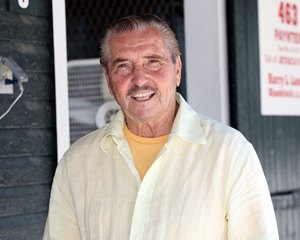Breeder Would Like to See New York Program Tweaked


Regarded as the model for state-bred incentive programs, the New York Thoroughbred Development Fund has been an unqualified success, with horses bred in the state now succeeding on a regular basis in top-tier races and sales.
But for some, the program may be too much of a good thing. For example, the catalog for Fasig-Tipton's New York-Bred Preferred Yearlings Sale in Saratoga Springs, N.Y., is dominated by offspring of some of North America's leading sires, most of whom stand in Kentucky and not New York.
There is also a preponderance of Kentucky-based agencies on the consignors' list for the Aug. 11-12 auction, with fewer New York-based consignors represented.
One veteran New York-based agent who appreciates the positives the program has brought to the state's Thoroughbred breeding industry also feels it is now time to tweak it to provide greater incentives to keep mares and stallions in the state.
"The problem with the New York-bred program is that it is too much of a good thing and is attracting a lot of competition from outside the area," said Harry L. "Chip" Landry, who is based near Saratoga Springs and has been selling horses at various Fasig-Tipton sales since 1969. "My understanding of the original intention was to save the green space in New York, as dairy farms were going out of business and they wanted to try to encourage people to have farms to breed Thoroughbreds."
One aspect of the Development Fund program permits mares to be bred to out-of-state stallions, provided they return to New York within 90 days of mating and produce the foal in-state. That results in a large number of New York-breds, particularly those cataloged for the upcoming auction, to be sired by some of North America's leading stallions. There are greater incentives for New York-breds who also were sired by New York-based stallions, but with a paucity of stallions competitive on a national basis, many breeders apparently believe the returns at auction and on the track to be greater by breeding to Kentucky stallions, even with the added incentive.
"It is nice that we are getting better quality and prices are higher," Landry said, adding that while he is not critical of the program, he and operators of other New York-based entities would like to see greater incentives to keep mares in the state year-round. "The program is working, but it needs to be tweaked. But nobody knows how to tweak it. For some of these yearlings, their mares didn't spend much time in New York."
Landry not only talks the talk, he walks the walk when it comes to keeping his mares within the state, as they are maintained at Majestic Farm in Washington County. Excluding two withdrawals, the remaining five yearlings in Landry's consignment are out of full-time New York mares.
"I really feel like if you are going to be part of the program, you should be all-in," Landry said.
Among the program tweaks that have been bantered about, according to Landry, is a tiered rewards program that has a greater incentive to mares maintained in New York. Another idea is to increase the rewards for New York-sired yearlings.
Like so many other breeders, Landry's New York-bred sale yearlings are by Kentucky sires, an inevitable part of the breeding-to-sell system.
"Right now, they are paying more for those sired by Kentucky stallions, so you do have to send your horses to Kentucky," Landry said. "I am just hoping we can get a couple of top stallions here so we don't have to ship there."
